Today, Elon Musk elaborated on his plans to make humanity a planet-faring species. We’ve known for a long time that Mars is SpaceX’s destination, but the fine details haven’t been revealed. In today’s talk at the International Astronautical Congress (IAC), Musk revealed a game-changer for travel to Mars, and beyond.
If anyone has ever guessed that Musk’s plans involved a refuelling ship, I’ve never heard them say it out loud. But that’s exactly what Musk revealed. SpaceX plans to launch a Mars-bound craft into orbit, then launch a refuelling craft to refill the interplanetary ship’s fuel tanks. Only then would the Interplanetary Transport System (ITS) depart for Mars.
SpaceX’s proposed system is all about lowering the cost of travel to Mars. Only when the cost is lowered, does a sustained presence there become realistic. And Musk’s ITS system will definitely lower the cost.
Traditional space travel would cost $10 billion to get one person to Mars. Musk said that they can get it down to the median cost of a house in the US, about $200,000 US. The idea is that anyone who really wanted to could save up enough money and go to Mars. Musk did acknowledge that it will be tricky to reduce the cost of the Earth to Mars trip by a whopping 5 million percent.
There are four keys to reducing the cost:
- full reusability
- refilling in orbit
- propellant production on Mars
- right propellant
The ITS would feature reusable boosters, reusable spaceships, and refuelling in orbit. The interplanetary ship would be launched into orbit around Earth and parked there. Fuel ships would make 3 to 5 trips to fill the tank of the interplanetary ship waiting in orbit. From there, Musk thinks that the trip to Mars could take as little as 80 days. In the more distant future, that could be cut to 30 days.

If this whole system isn’t shocking enough, and thrilling enough, for you, Musk has more than just one of these craft in mind. He imagines a fleet of them, perhaps 1,000, travelling en masse back and forth to Mars.
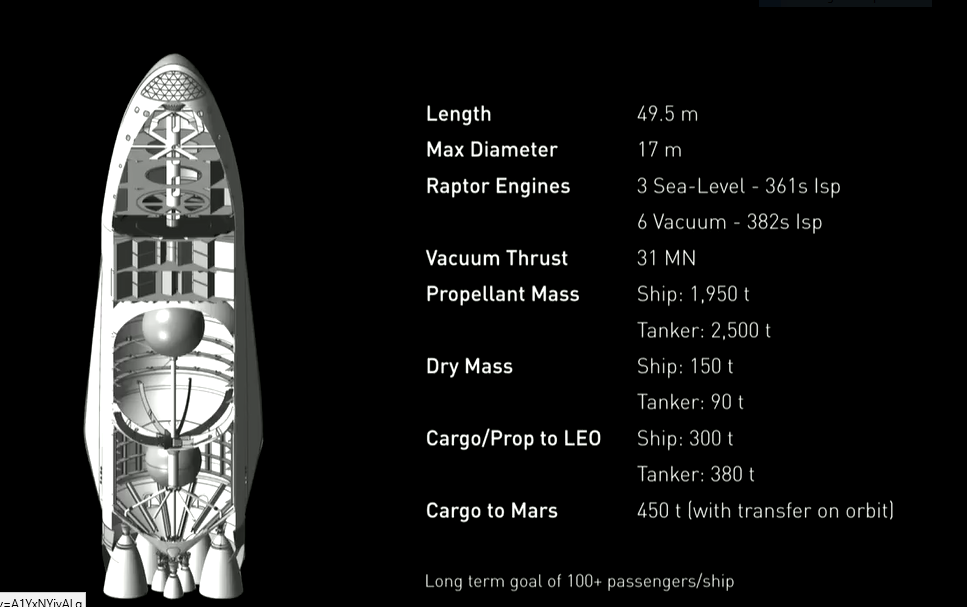
The driving force behind all this is, of course, making Mars possible. In his presentation, Musk said we have two paths. One is to stay on Earth and face extinction from some doomsday event. The other is to become an interplanetary species, and use Mars to back up Earth’s biosphere. The SpaceX system is designed to make the second path possible.
Musk talked about the need to create a self-sustaining city in its own right. That obviously won’t happen right away, but it’ll never happen unless transport to Mars, and back, becomes feasible. With the proposed SpaceX system, Mars will be an option. Musk thinks that the ITS could also get us to one of the Jovian moons, if we could create fuel production and depots. In fact, he said we can probably go all the way to Pluto and beyond.
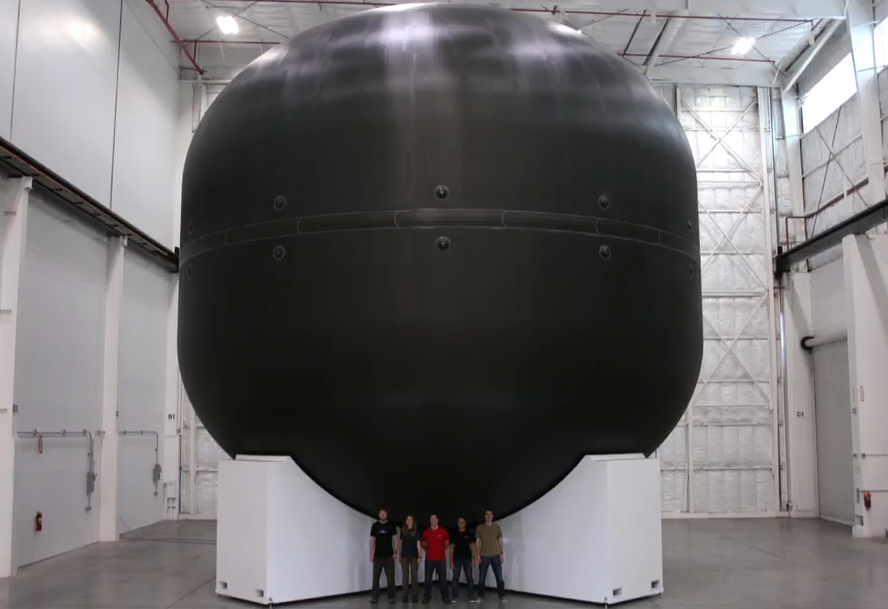
There are a lot of challenges for this system. It’s far from a done deal. The system will require newer, more powerful engines. But SpaceX is already working on that. It’s called the Raptor, and testing has already begun.
Musk talked about the impressive exploration done on Mars by NASA and other agencies, but stressed that it’s time to take things further and aim for a sustained presence on Mars. To that end, SpaceX plans on sending a craft to Mars during every Earth-Mars opposition, which happens about every 2 years. Initially, that will be done with an unmanned Dragon capsule.
The mood at Musk’s presentation was one of excitement. The crowd was definitely there to see him. There was one humorous moment when Musk remarked “Timelines. I’m not the best at this sort of thing.” This is a nod to the difficulties with creating a timeline for something like the ITS. But really, what agency can adhere to strict schedules when doing something that’s never been done before? Especially in the realm of interplanetary travel?
The excitement surrounding Musk’s plans for travel to Mars is palpable. That’s understandable, considering the magnitude of what he’s talking about, and considering how long people have dreamed of going to Mars. The fact that someone with a track record like SpaceX’s is starting to lay the groundwork for travel to, and a presence on Mars, is exciting. There’s no way around it.
But there are lots of questions. Musk is the first to admit that he doesn’t have all the answers. He says up front that he sees his role as developing the transport system. Once that is moving ahead, others will address the challenges of establishing a presence on Mars.
One of the primary questions is around energy, and there are two sides to that. Fuel processing will have to be established quickly on Mars if the ships are to return to Earth.
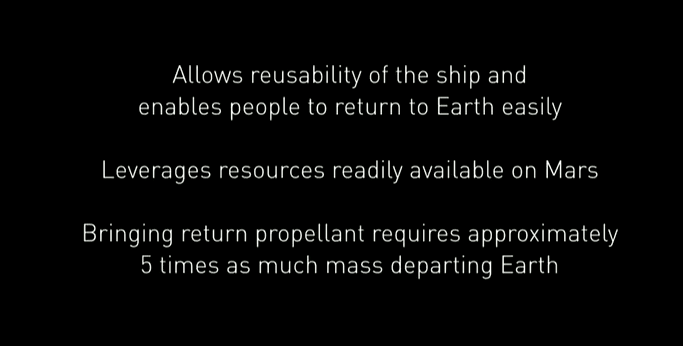
Musk also talked about the three possible fuel types to be derived on Mars.
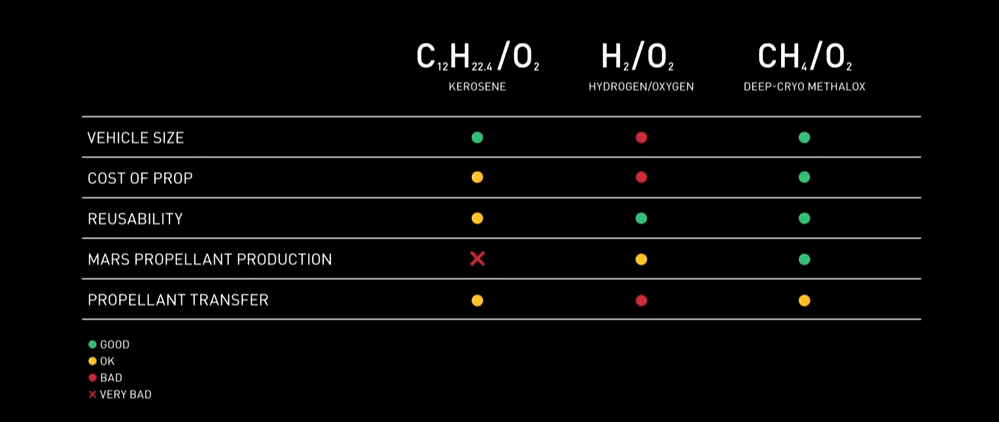
The ITS ships will be able to carry a large payload, so it’s possible that the parts and pieces for a fuel plant could be pre-built somehow, then sent to Mars. There is an enormous amount of detail missing when it comes right down to it, but human ingenuity being what it is, this may be solvable.
Assuming that a rocket fuel plant could be assembled on Mars, that begs the second energy question. Creating this fuel will in itself require lots of energy. Much more than solar can provide. Musk briefly mentioned the possibility of nuclear energy, but didn’t go into detail. That’s understandable, because he clearly sees his role as developing the transportation system.
Establishing nuclear energy on Mars would also require a lot of infrastructure. On Earth, uranium processing is an enormous task. How will that be done on Mars? Is there enough uranium in Mars’ crust? Conventional atomic reactors use water, lots of it, to produce energy. Where will that water come from on Mars? Will the same amount be needed?
Or will thorium reactors be used? If you’re not up on thorium reactors, they are different than uranium reactors and are worth reading about. They use thorium for fuel, not uranium, and are different in other ways. They’re safer and produce less waste, but is there sufficient thorium available on Mars? Thorium is much more plentiful in Earth’s crust than uranium.
Small Modular Reactors (SMRs) are being developed for use on Earth. They are built in one location, then moved to their operational location. They can be linked together and require less sophisticated operators. Perhaps SMRs using thorium will provide the energy required for the ITS to work.
These questions are all important of course, and they bear thinking about. But one thing that can’t be denied is Musk’s vision. Anyone that wants humanity to survive, or that grew up reading science fiction, will love what Musk is doing. For that matter, anyone with a sense of adventure will love Musk.
Musk’s overall vision of us as a planet-faring species is something that will be a long time coming, I think. Fleets of interplanetary cargo ships plying the solar system, with fuelling depots along the way. An established human presence on Mars, the Moon, and perhaps the moons of the gas giants, and all the way out to Pluto.
It seems like a fanciful dream, but remember what Musk said at the start of his presentation. There are really only two paths. The first is to restrict ourselves to Earth, and die at the hands of some sort of extinction event.
The second path is to head outward and expand throughout the solar system.
It’s not science fiction anymore. It’s simple survival.

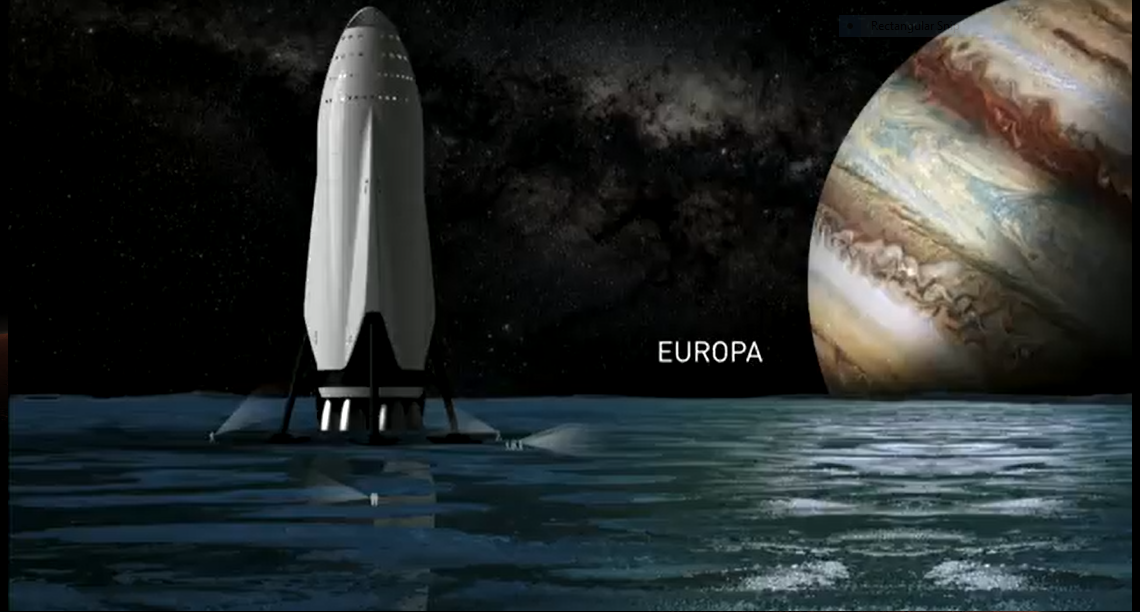
Elon, if you put people on Mars then you will be responsible for the care and feeding of those people. Getting there is a small part of people living on Mars.
I hope you don’t really think that everything like food, water, shelter, tools, oxygen, vehicles, on and on…. I mean he is talking about a city eventually, so I’m guessing that includes food. Just because every minute yet obvious detail isn’t included, doesn’t mean they haven’t been or won’t be accounted for. 😉
It’s a beautiful plan, but completely unrealistic especially within 10-20 years. This may work in the 2050 or beyond. A far more realistic plan would have been to use a transfer stage composed of a couple of Bigelow modules and 3-4 Dragon 2 capsules for descent to the surface to transport some 15-20 people (with pre-staged supplies, and accommodations, etc)… hopefully the plan works… some day…
That’s three against, so far.
Well, I’m for it. The main rocket is three times the thrust of the Saturn 5, which is not a huge leap into the unknown. You are refuelling in space, but not using hundreds of rockets to do so. I would like to see the habitable part spin to give artificial gravity on the trip out.
There is no rush to do this. The first trip out could be entirely unmanned, which would leave a lifeboat if a later manned expedition hit problems.
One-hundred-twenty-eight MN is 29 M-pounds. Raptors were supposed to be 1 M-pounds each. So, somewhere between 4 and 6 times more thrust than a Saturn 5. You are right; not a huge increase in scale.
Beautiful engineering. The trouble is that the cost of a ticket to get to Mars is just the beginning. Picking up on the airline analogy, I can afford to fly to JFK but I couldn’t afford to pay my share of building New York.
Elon may be solving a huge part of the puzzle but the up front cost of building a self-sustaining infrastructure and community on Mars which can also grow in size fast enough to accept the proposed influx of new members every 26 months may be the trickiest part.
But that’s for the future. For now, if SpaceX can continue to develop its technologies then maybe anything is possible. Chapeau.
Saving humanity from extinction is a weak justification for terraforming Mars. If life on Earth were extinguished I wouldn’t find much consolation in knowing that a relatively small group of humans had survived on Mars. And with the Earth gone, could life on Mars be sustained?
Preventing the extinction event seems like a much better use of technology. There’s been life on Earth continuously for billions of years. There’d be amble time to counter the extinction event.
But as long as it’s Elon’s money, go for it.
Save fuel, reduce costs and protect the environment at the same time: use solar sails to get the supplies and materials for a colony, or even a brief living environment, you need to Mars’ orbit. It doesn’t matter if the journey takes 20 or 30 years – that will let you plan the human part of the trip, which can occur in a much shorter time scale.
There you have it…my 2 cents.
Musk cited “existential risk” as a primary motive. While we do not yet know what the odds of extinction might be for an interplanetary species, we do know they are less than the 100% odds of extinction for a single-planet species. As far as who will go and why? That’s up to the socio-economists 😉
I have no idea why (despite what we were taught in grade school), in 1620, folks got onto a sketchy old wooden ship only to arrive at an alien winter landscape with few survival skills and no food. Yet they did it anyway, and nearly half of them survived the first year. The ordeal of the journey alone led to the drafting of the Mayflower Compact (as important a document in and of the development of civilized society as any other…). Unlike Boeing or the Dutch East India Company, to draw out the 17th C analogy, SpaceX is not a corporate entity, by design, and so it is free to act in the best interests of our species as a whole. Cape Canaveral is the new Southampton and Plymouth England now and beginning with Curiosity, we have not seen a launch window to Mars go unused. Every twenty-six months, for generations to come, our species will be setting sail for the frontier. I am grateful to both understand this and be alive to witness it!
Hey Evan, you said:
“If anyone has ever guessed that Musk’s plans involved a refuelling ship, I’ve never heard them say it out loud”.
Well, Twitter and Imgur user Just A. Tinker (https://twitter.com/John_Gardi/) came pretty close:
https://twitter.com/John_Gardi/status/777557235224416256
http://imgur.com/a/87OOT
The technology developed will enable small to medium communities to be truly self-sustaining and the social consequences of that will be immense because they can be applied to Earth just as easily as to Mars and the Solar System. How will capitalism work when labour is not required and energy can be easily harnessed. Raw materials and knowledge will be the main currencies and there will be huge resistance to change from powerful vested interests. If I was Elon, I would be looking to a big-time security wing of my operation to protect to protect it from all forms of sabotage, and I wouldn’t talk about it.
Musk already has this…in one of his speeches he explained that his family was worried the Russians might assassinate him for seriously undercutting their price for launch services 🙂
After reading the negative “It’ll never work.” comments above it seems like the only one missing is “…If man was meant to go to Mars he would have been born there.”
Wow. I’m amazed at how the arm-chair quarterback comments can find all the ways that it won’t work instead of at least putting a positive way to fix it.
If you don’t think it will work then what will? If you’re going be negative then where is your better idea? E. Musk has been at the heart and soul of some forward thinking ideas that are making our world a better place.
But it’s safe to find all the “problems” and why “it won’t work” behind a key board. If the math is wrong then good job for sending a correction. How about the idea that the math is supporting?
More than one paradigm changer has been opposed and criticized when they try ideas that challenge the accepted ways.
Are the haters jealous? Maybe they don’t like it because they can’t control it or can’t make money from it. Maybe they didn’t come up with it so therefore it must be opposed.
As for myself, I hope it works and if I had the money I’d go. On-site, self sufficient production and transport reusability are basics of population movement and colonization.
Maybe the word “colonize” has some made-up politically abrasive meaning. If our ancestors didn’t “colonize” across the world, through out history, we wouldn’t be here.
If our home. Earth, is running into limited space and resources then we must look outward or face the societal collapse and shortages that precede the extinction that follows.
With any luck, I’ll have grand kids or great grand kids born on Mars in my life time.